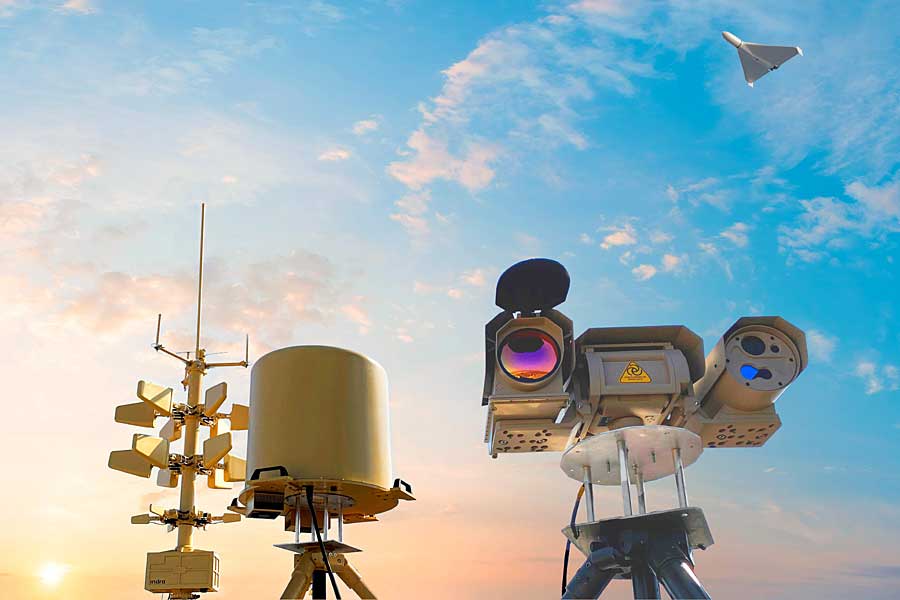SOURCE: AFI


Indian Army released a Request for Information (RFI) for the procurement of Counter-Unmanned Aerial Systems (C-UAS) to be integrated onto its BMP-2/2K Infantry Combat Vehicles (ICVs), with a planned supply of 100 units per year. This initiative, aligned with the Make in India program, aims to enhance the Army’s mechanized infantry capabilities by equipping its aging but critical BMP-2/2K fleet with advanced anti-drone technology.
The move reflects India’s growing focus on countering unmanned aerial threats, particularly along its volatile borders with Pakistan and China, where drones have emerged as a significant challenge. This article explores the RFI’s objectives, the strategic context, and the implications for India’s defense modernization.
The RFI, announced seeks a comprehensive C-UAS solution tailored for the BMP-2/2K ICVs, which form the backbone of India’s mechanized infantry. The system is intended to protect these vehicles from hostile unmanned aerial vehicles (UAVs), including surveillance drones, loitering munitions, and first-person view (FPV) drones, which have proliferated in modern warfare. Key operational requirements include:
- Detection and Tracking: The C-UAS must detect, classify, and track UAVs in real-time, using advanced sensors like radar, electro-optical/infrared (EO/IR) systems, or radio-frequency (RF) detectors, effective across diverse terrains, including high-altitude regions like Eastern Ladakh.
- Neutralization: The system should neutralize UAVs through kinetic means (e.g., directed gunfire or missiles) or non-kinetic means (e.g., RF jamming or laser-based interdiction), ensuring minimal collateral damage.
- Integration: The C-UAS must seamlessly integrate with the BMP-2/2K’s existing fire control system (FCS), gunner’s main sight, and commander’s panoramic sight, leveraging upgrades like the BMP-2M configuration, which includes night-fighting capabilities and automatic target tracking.
- Mobility and Durability: The system must be rugged, lightweight, and compatible with the BMP-2/2K’s amphibious and cross-country mobility, operating in extreme conditions from deserts to mountains.
- Indigenous Content: In line with Make in India, the RFI emphasizes a minimum 50% indigenous content, encouraging collaboration between domestic manufacturers, DRDO, and private firms.
The procurement targets 100 units annually, indicating a phased approach to equip the Army’s estimated 1,500–2,500 BMP-2/2K vehicles, which serve in roles like troop transport, command posts, and armored ambulances. The RFI invites responses from Indian vendors by a specified deadline (not detailed in public sources), with trials to follow to assess system performance.
The Indian Army’s focus on C-UAS reflects the growing threat of UAVs in its operational environment, driven by regional adversaries and global trends in warfare. Along the Line of Control (LoC) with Pakistan and the Line of Actual Control (LAC) with China, drones have been used for surveillance, arms smuggling, and potential strikes. Pakistan has deployed Chinese-made DJI drones and indigenously developed systems, while China’s extensive drone arsenal, including swarm capabilities, poses a sophisticated challenge.
Globally, the Russia-Ukraine conflict has demonstrated the transformative role of drones, with FPV drones, loitering munitions, and kamikaze UAVs reshaping battlefield dynamics. India’s own experience, including the 2021 drone attack on the Jammu Air Force Station, exposed vulnerabilities in its air defense network, prompting accelerated investments in C-UAS technologies. The Army’s existing UAV fleet, including Israeli Searcher Mk II and Heron drones, is robust for ISR but lacks integrated counter-drone capabilities on mobile platforms like the BMP-2/2K.
The BMP-2/2K, a Soviet-designed ICV in service since the 1980s, is critical for India’s mechanized infantry, particularly in Eastern Ladakh, where it supports operations in high-altitude terrain. Recent upgrades to the BMP-2M standard, including night-fighting capabilities and anti-drone ammunition, have enhanced its lethality, but the absence of dedicated C-UAS limits its ability to counter aerial threats. The RFI addresses this gap, ensuring that mechanized units remain protected against low-cost, high-impact UAVs.
NOTE: AFI is a proud outsourced content creator partner of IDRW.ORG. All content created by AFI is the sole property of AFI and is protected by copyright. AFI takes copyright infringement seriously and will pursue all legal options available to protect its content.